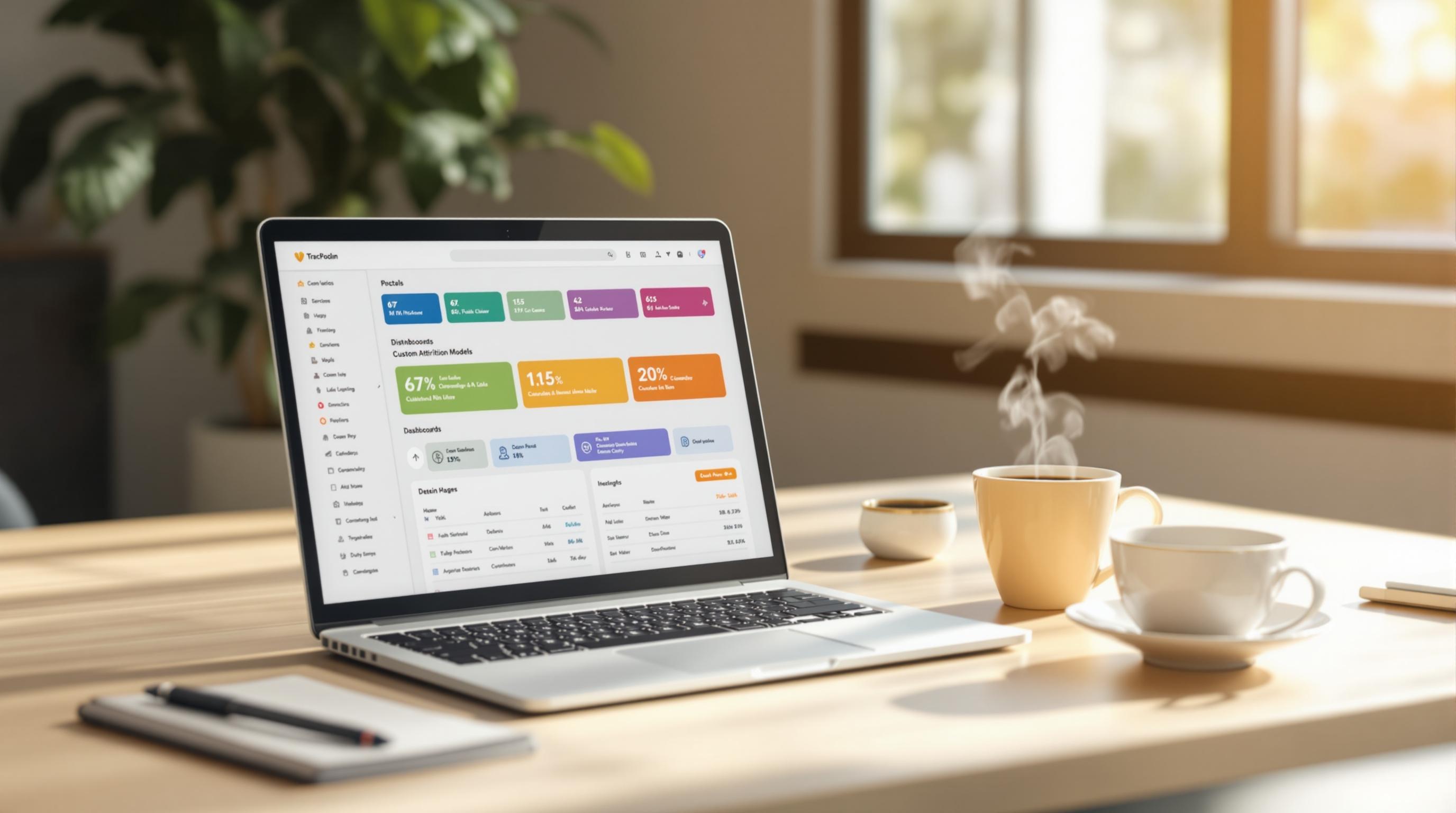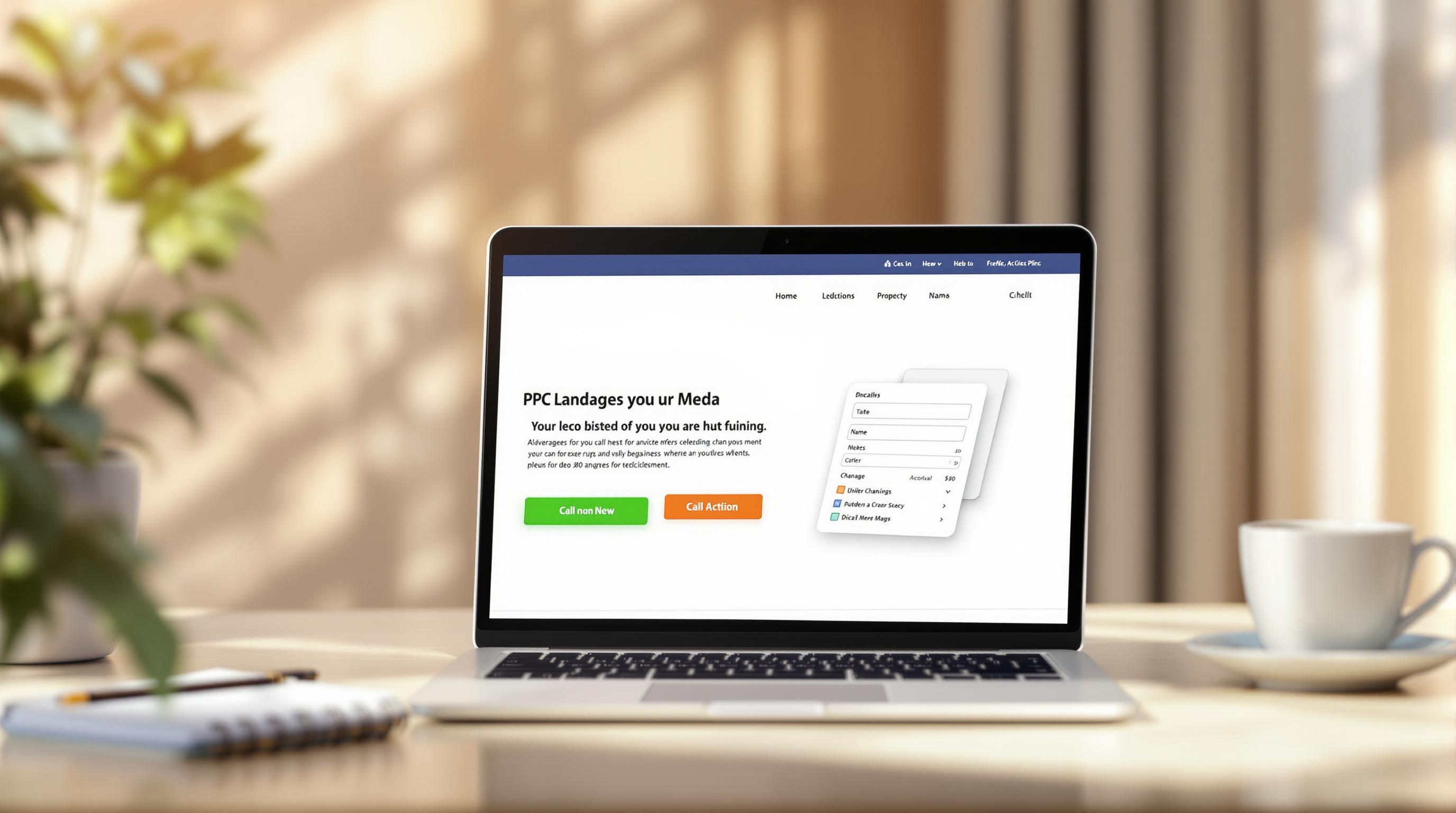Search intent retargeting focuses on delivering ads based on why users are searching, rather than just their past behavior. By understanding user intent - whether they’re looking for information, comparing options, or ready to buy - you can create ads that match their needs and improve results. Here’s a quick breakdown:
- What It Is: A strategy that aligns ads with user search intent (informational, navigational, commercial, transactional).
- Why It Works: Increases relevance, engagement, and ROI by targeting users at the right stage of their buying journey.
- How to Do It:
- Identify user intent (e.g., "how to choose" = informational, "buy now" = transactional).
- Segment audiences based on search patterns using tools like Google Analytics.
- Create tailored ads and landing pages for each intent type.
- Monitor key metrics (CTR, conversion rate, CPC) and optimize campaigns.
Search Intent and Google Ads Keyword Targeting
Steps to Set Up a Search Intent Retargeting Campaign
Understanding search intent is a game-changer, but putting it into action requires a clear plan. Here’s how to create campaigns that match your audience’s search behavior.
Types of Search Intent
Search intent falls into four categories: navigational, informational, commercial investigation, and transactional. Each type reflects a different user goal. For instance, a search like "buy laptop" indicates someone ready to make a purchase, so your ads should focus on sales. On the other hand, a query like "how to choose a laptop" suggests a need for guidance, making educational content more appropriate.
Segmenting Audiences by Search Intent
After identifying user intent, segment your audience based on their actions to deliver more relevant ads. Tools like Google Analytics can help you pinpoint search patterns tied to intent. Pay attention to metrics such as search terms, pages visited, and conversion paths. Use these insights to create custom audience lists in Google Ads, enabling you to retarget users effectively at various stages of the funnel.
Setting Up Campaign Parameters
Your campaign settings should reflect the type of intent you're targeting. For example:
- Focus on engagement metrics for informational intent.
- Optimize for conversions when targeting transactional intent.
Allocate more budget to campaigns aimed at commercial and transactional intents, as these users are closer to making a purchase. Group ads by intent signals, such as "how to" or "buy now", for precise targeting.
For additional support, check out tools listed in the Top PPC Marketing Directory. These can simplify tasks like keyword research, bid management, and performance tracking, making campaign setup and optimization more efficient.
Once your campaigns are live, fine-tune them by zeroing in on intent-driven keywords and ensuring your messaging aligns with user needs.
Improving Search Intent Retargeting Campaigns
Finding Intent-Driven Keywords
Keywords are the backbone of search intent retargeting. They help you pinpoint and target what users are looking for. Tools like Ahrefs, SEMrush, and Google Trends can reveal patterns in search behavior that signal intent. Instead of just chasing high search volume, focus on understanding the why behind searches.
Organize keywords into intent types:
- Informational: "how to choose winter coats"
- Commercial: "best winter coats reviews"
- Transactional: "buy winter coats online"
- Navigational: "North Face winter coats store"
Timing and search volume trends also play a role in fine-tuning your strategy. Once you've identified intent-based keywords, the next step is ensuring your ads and landing pages meet user expectations.
Aligning Ad Copy and Landing Pages
A smooth connection between your ads and landing pages can make or break conversions. Your ad copy should match the user's intent, while the landing page delivers exactly what the ad promises.
Here’s how to align them:
For Informational Intent:
- Highlight the educational value in your ad copy.
- Offer detailed guides or tutorials on the landing page.
- Provide clear next steps for further learning.
For Transactional Intent:
- Use action-driven language and strong calls to action (CTAs) in your ads.
- Keep landing pages distraction-free with a clean design.
- Include easy-to-spot "Buy Now" or "Get Started" buttons.
- Display pricing, shipping details, and purchase options clearly.
According to WordStream, aligning ads with user intent can increase conversion rates by up to 20% [2]. Make sure your landing pages are mobile-friendly, load quickly, and maintain consistent messaging with your ads.
For even better results, use tools from the Top PPC Marketing Directory to manage campaigns and track performance. These tools can help you find the best combinations of ad copy and landing pages to maximize conversions for each intent type.
sbb-itb-89b8f36
Evaluating and Adjusting Campaign Performance
Monitoring Key Metrics
Tracking the right metrics is crucial for success in search intent retargeting. Here are three key indicators to focus on:
| Metric | Industry Average | Purpose |
|---|---|---|
| Click-Through Rate (CTR) | 1.91% | Measures ad relevance |
| Conversion Rate | 2.58% | Evaluates campaign success |
| Cost Per Click (CPC) | $1.07 | Assesses budget efficiency |
Breaking these metrics down by intent type can reveal which audience segments need fine-tuning. For example, keywords targeting transactional intent often have higher CPCs but deliver stronger conversion rates compared to informational queries.
Adjusting Campaign Tactics
Performance data is your roadmap for making improvements. Here’s how you can address common issues:
Boosting Low CTR:
- Reassess keyword relevance and refine audience targeting.
- Experiment with different ad copy to see what resonates.
- Adjust ad scheduling to align with peak performance times.
Improving Conversion Rates:
- Ensure landing pages match user intent and simplify the conversion process.
- Speed up page load times to reduce drop-offs.
- Test various call-to-action placements to find the most effective spot.
Managing CPC:
- Modify bids based on the value of each intent type.
- Allocate more budget to high-performing segments.
- Enhance quality scores by refining your keyword strategy.
Using tools like those listed in the Top PPC Marketing Directory can help automate these adjustments and provide deeper insights. Regular monitoring - weekly for performance checks and monthly for strategic reviews - ensures your campaigns stay on track and deliver the best results.
Once you've optimized your campaigns, the right tools can make ongoing management even easier and more effective.
Resources for Search Intent Retargeting
To make search intent retargeting work effectively, having the right tools is key. The Top PPC Marketing Directory is a great resource to explore tools and services designed to refine your retargeting campaigns.
| Category | Available Resources | Purpose |
|---|---|---|
| Campaign Management | Bid Management Tools, Performance Trackers | Simplify operations and monitor campaign results |
| Keyword Research | Intent Analysis Tools, Search Volume Tools | Pinpoint keywords that match user intent |
| Ad Optimization | Copy Testing Tools, Landing Page Optimizers | Boost ad relevance and increase conversions |
| Retargeting | Audience Segmentation Platforms, Behavioral Analytics | Better target users using intent-based signals |
This directory showcases tools that help with identifying intent-focused keywords, segmenting audiences effectively, and tracking campaign success. Tools with advanced segmentation and behavioral analytics are especially helpful for retargeting efforts.
When selecting tools, look for features like:
- Intent analysis functions
- Advanced audience segmentation
- Detailed performance tracking
- Seamless integration capabilities
Conclusion: Mastering Search Intent Retargeting
Search intent retargeting combines user intent with precise ad targeting to create a highly effective digital advertising strategy. To excel in this area, focus on three main elements.
Start with a data-focused approach to drive improvements. Keep an eye on metrics like click-through rates (CTR), conversion rates, and cost-per-click (CPC). These numbers will help you fine-tune your targeting and improve campaign outcomes. The right tools can make this process much easier.
Consider using platforms like those listed in the Top PPC Marketing Directory to manage campaigns, analyze intent, and track performance efficiently. Remember, search intent retargeting is not a one-and-done effort - it requires constant adjustments. By following strategies like audience segmentation, aligning ads with intent, and closely monitoring results, you can significantly increase your campaign's effectiveness.
Ultimately, success hinges on understanding what users need, delivering ads that match their intent, and continually optimizing to achieve clear, measurable outcomes. Research from WordStream highlights that aligning ads with user intent greatly boosts both relevance and conversion rates [1].


